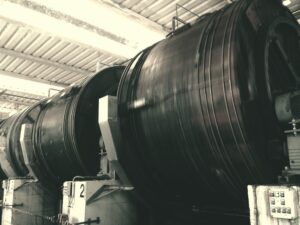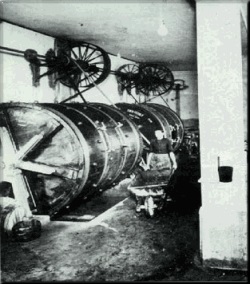
The tanning process dates back to prehistoric times, when man began using the fur of hunted animals to protect himself from bad weather. Leather, however, is an organic material, therefore, after a few days it will rot, if not treated properly. Thus, it was essential to find processes to increase the resistance of leather to enable it to be used for longer. Since ancient times, man has known that water, aldehydes (emitted from smoking wood fresh), tannins (contained in wood and in plants) and lime (particles of limestone from stones in fireplaces), allow leather to last, without rotting.
For many centuries, these components and manual labour were used in the tanning process. It is only since the second half of the nineteenth century, with the introduction of the drum (large cylinder that rotates around its axis and allows substances to penetrate faster and more deeply in within the leather), that the process has been transformed from artisanal to industrial, with obvious benefits in terms of time and effectiveness.
Chrome tanning was introduced at the beginning of the twentieth century. This is still the most widely used process based on trivalent chromium tanning properties which prevent leather rotting.
Nowadays, there are different type of tanning process, which differ in the substances and chemicals used (chrome, aluminum, zirconium, tannins, aldehydes, acids, etc.).
As already mentioned, 80-90% of worldwide leather production is produced from trivalent chrome tanning. Leather obtained through this process is commonly known as “wet-blue”, due to its characteristic bluish colour.
Until a few months ago, production of Marchetto Pellami was almost exclusively based on this tanning process. In recent months we are introducing, in parallel to the traditional wet-blue process, a new chromium and other metal free tanning, called “wet-white”, which uses a combination of synthetic and vegetable tannins.

